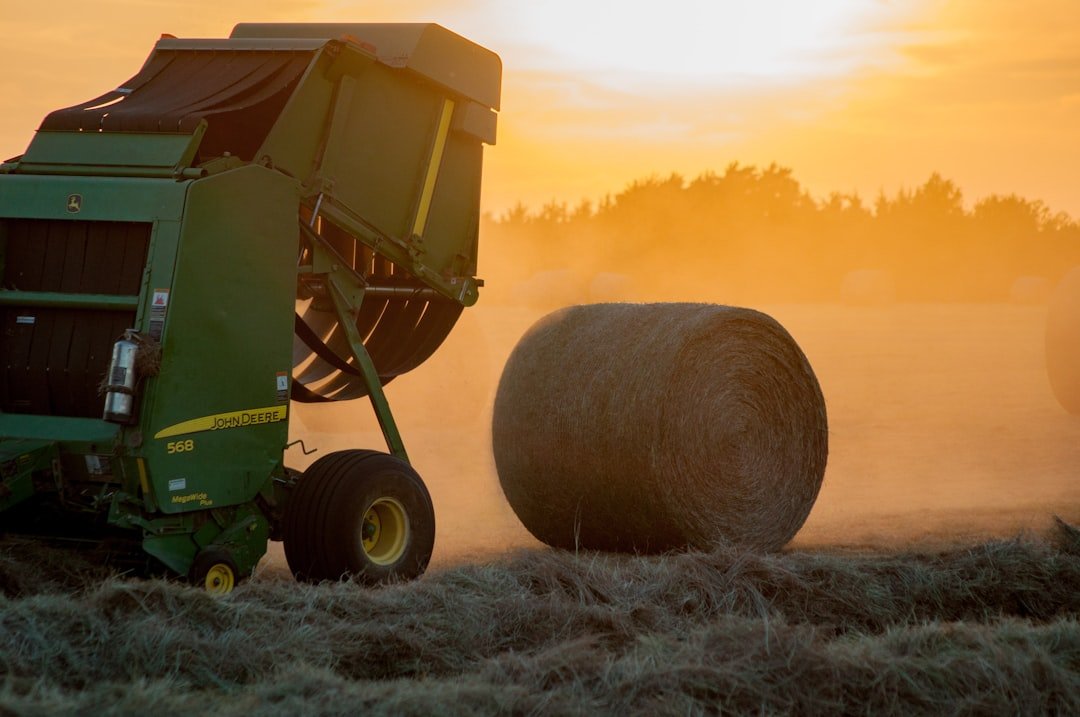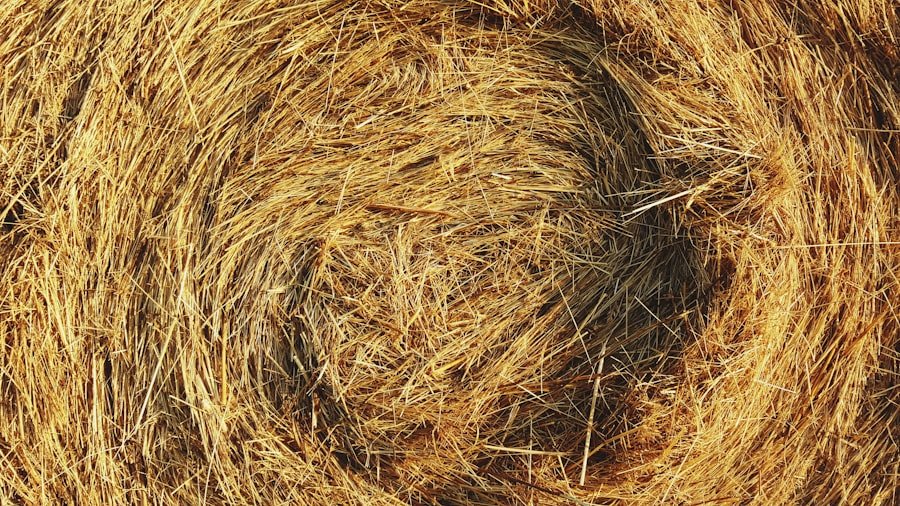How to Start a Successful Hay Bale Business [Free Guide]

The hay bale business is a niche market within the agricultural industry that focuses on the production and sale of hay bales. Hay bales are used primarily as animal feed for livestock such as horses, cows, and sheep. They are also used for landscaping, erosion control, and as a bedding material for animals. The hay bale business is a vital part of the agricultural supply chain, providing essential feed and bedding for livestock owners and farmers.
To be successful in the hay bale business, it is important to understand the different types of hay, such as alfalfa, timothy, and clover, and their respective uses. Additionally, knowledge of the hay baling process, including cutting, drying, and baling, is crucial for producing high-quality hay bales. Understanding the market demand for hay bales and the seasonal fluctuations in supply and demand is also essential for running a successful hay bale business.
Overall, the hay bale business requires a deep understanding of the agricultural industry, including farming practices, animal husbandry, and market dynamics. It also requires a commitment to producing high-quality hay bales and providing excellent customer service to meet the needs of livestock owners and farmers.
Setting Up Your Hay Bale Business
Setting up a hay bale business requires careful planning and consideration of several key factors. First, you will need to acquire suitable land for growing and harvesting hay. This may involve purchasing or leasing farmland with suitable soil and access to water for irrigation. You will also need to invest in the necessary equipment for cutting, drying, and baling hay, such as tractors, mowers, rakes, balers, and storage facilities.
Once you have secured the land and equipment, you will need to decide on the type of hay you will produce based on market demand and local growing conditions. This may involve conducting market research and consulting with local farmers and livestock owners to determine the most profitable and in-demand types of hay in your area.
In addition to production considerations, you will also need to establish a business plan that outlines your production goals, marketing strategy, and financial projections. This may involve seeking financing from banks or investors to cover startup costs and operating expenses. Finally, you will need to comply with any local regulations and obtain any necessary permits or licenses for operating a hay bale business.
Identifying Your Target Market
Identifying your target market is crucial for the success of your hay bale business. Your target market may include livestock owners such as horse stables, cattle ranches, and dairy farms, as well as landscaping companies and homeowners who use hay bales for erosion control and landscaping purposes. Understanding the specific needs and preferences of your target market will help you tailor your products and marketing efforts to meet their needs.
For example, livestock owners may require high-quality alfalfa or timothy hay for their animals, while landscaping companies may be more interested in straw bales for landscaping projects. By understanding the unique needs of each segment of your target market, you can develop a product offering that meets their specific requirements and sets your business apart from competitors.
In addition to understanding the needs of your target market, it is also important to consider the geographic location of your customers. For example, if you are located in a rural area with many livestock farms, you may focus on serving the needs of local farmers. Alternatively, if you are located in a suburban or urban area, you may target homeowners and landscaping companies in nearby communities.
Creating a Marketing Strategy
Creating a marketing strategy is essential for promoting your hay bale business and attracting customers. Your marketing strategy should include a mix of online and offline tactics to reach your target market effectively. This may include creating a professional website to showcase your products and services, as well as using social media platforms to engage with potential customers and build brand awareness.
In addition to online marketing efforts, you may also consider traditional advertising methods such as print ads in local agricultural publications or attending trade shows and agricultural fairs to showcase your products. Building relationships with local farmers, livestock owners, and landscaping companies can also be an effective way to generate word-of-mouth referrals and repeat business.
Furthermore, offering promotions or discounts for first-time customers or bulk orders can help incentivize new customers to try your products and encourage repeat purchases. By creating a comprehensive marketing strategy that leverages both online and offline channels, you can effectively reach your target market and drive sales for your hay bale business.
Leveraging Influencer Marketing
Influencer marketing can be a powerful tool for promoting your hay bale business and reaching new customers. By partnering with influencers in the agricultural or equestrian space, you can tap into their existing audience and leverage their credibility and trust to promote your products. This may involve sponsoring content on their social media channels or blogs, or collaborating on co-branded events or promotions.
When selecting influencers to partner with, it is important to choose individuals who align with your brand values and target market. For example, if you primarily sell alfalfa hay for horse owners, partnering with equestrian influencers who have a large following of horse enthusiasts can help you reach a highly targeted audience that is likely to be interested in your products.
In addition to reaching new customers, influencer marketing can also help build brand awareness and credibility for your hay bale business. By associating your brand with trusted influencers in the agricultural or equestrian space, you can position your business as a reputable source for high-quality hay bales and attract new customers who may have been previously unfamiliar with your products.
Managing Your Hay Bale Business

Managing a hay bale business involves overseeing all aspects of production, sales, and customer service to ensure the smooth operation of your business. This may include managing farm operations such as planting, harvesting, and baling hay, as well as overseeing inventory management and distribution to fulfill customer orders.
In addition to production considerations, managing your hay bale business also involves providing excellent customer service to build long-term relationships with your customers. This may involve promptly responding to customer inquiries, ensuring timely delivery of orders, and addressing any issues or concerns that may arise.
Furthermore, managing your hay bale business also requires monitoring market trends and adjusting your product offerings and marketing strategies accordingly. By staying informed about changes in market demand or new opportunities for expansion, you can position your business for long-term success and growth.
Scaling Your Hay Bale Business
Scaling your hay bale business involves expanding your production capacity and customer base to increase sales and profitability. This may involve investing in additional land or equipment to increase your hay production capacity, as well as hiring additional staff to support growing operations.
In addition to expanding production capacity, scaling your hay bale business also involves exploring new sales channels or geographic markets to reach new customers. This may involve partnering with distributors or retailers to sell your products in new locations or expanding your online sales efforts to reach customers outside of your local area.
Furthermore, scaling your hay bale business may also involve diversifying your product offerings to meet the needs of new customer segments or capitalize on emerging market trends. For example, if there is growing demand for organic or sustainably produced hay bales, you may consider expanding your product line to include these options.
Overall, scaling your hay bale business requires careful planning and consideration of production capacity, sales channels, and market opportunities to ensure sustainable growth and long-term success. By continuously evaluating opportunities for expansion and adapting your business strategy accordingly, you can position your hay bale business for continued growth and profitability.
If you’re interested in starting a successful hay bale business, you may also want to check out this article on howtostart.digital that provides tips on how to effectively market your agricultural products online. This article can help you understand the importance of digital marketing in reaching a wider audience and increasing sales for your hay bale business.
FAQs
What is a hay bale business?
A hay bale business involves the production and sale of hay bales, which are used as animal feed or bedding for livestock.
What are the steps to start a successful hay bale business?
The steps to start a successful hay bale business include conducting market research, acquiring suitable land for hay production, investing in the necessary equipment, establishing relationships with suppliers and buyers, and implementing effective marketing strategies.
What equipment is needed to start a hay bale business?
The equipment needed to start a hay bale business typically includes tractors, mowers, balers, rakes, and wagons for transportation.
What are the potential challenges of starting a hay bale business?
Potential challenges of starting a hay bale business may include weather-related risks, fluctuating market prices, competition from other hay producers, and the need for proper storage facilities.
How can I market my hay bale business?
Marketing strategies for a hay bale business may include creating a professional website, networking with local farmers and ranchers, attending agricultural trade shows, and utilizing social media platforms to reach potential customers.





